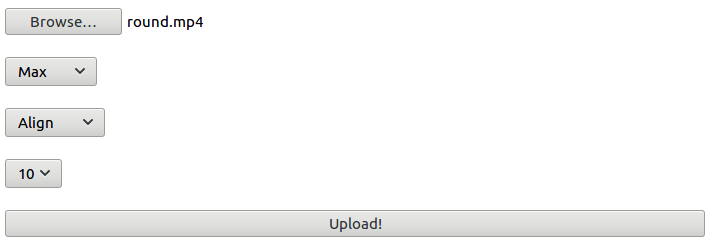
For near infrared and ultraviolet-A exposures, it is generally possible to approximate a grey card by clicking on an area of the image of medium brightness. If you did not use a grey card, adjust the white balance manually to the best of your ability. If performed correctly, this should cause any near infrared exposures to appear as greyscale ("black-and-white"), and reduce the purple tint of any ultraviolet-A shots.
Hugin image stacking software#
If your image-editing software supports 16-bit-per-channel images, use these steps: In the Working Spaces section, there is a drop-down for Gray. To do this (on Windows, at least), while in Photoshop®'s main window, press CTRL-Shift-K on your keyboard to open the Colour Settings window. If you are working with Adobe Photoshop®, I strongly recommend changing the greyscale working space from the default, because the default that Photoshop® uses is stupid and confusing and steals lollipops from small children just to make them cry.

In the case of these steps specifically, much of the work can be performed using non-destructive editing (effects layers, etc.). If they are supported, you should most definitely use them because they provide an enormously greater dynamic range and fidelity than older 8-bit-per-channel formats. There are two variations on this section depending on whether or not your image-editing software supports 16-bit-per-channel images.

Remember that Hugin's intended purpose is for panorama stitching, not aligning multispectral exposures, so some additional steps are required for this repurposing.īefore Hugin even comes into play, it's necessary to turn the RAW files from your camera into something it can use. If you are not a human, but an advanced robot or cyborg with motion-control software that guarantees the exact same shot for multiple exposures, and you are using an expensive multispectral lens whose design renders the focal lengths identical, you can skip this lengthy process altogether. Second, to correct for the slightly different effective focal lengths that the exposures will have due to the longer (in the case of near infrared) and/or shorter (in the case of ultraviolet-A) wavelengths of light. The high-level reason for this work is twofold: first, to correct for any jostling of the tripod in-between your exposures.

Hugin is also available for Linux and MacOS, and I imagine these instructions are more or less valid for those versions.
Hugin image stacking windows#
These instructions assume the use of Hugin 0.7.0, because at the time of this writing that was the most recent version for which a precompiled Windows version was available, and I don't expect most photographers (even among the subset who are unusual enough to want to use this process) to be interested in compiling their own binaries. There is a longer explanation of Hugin in the Other Tools article. The first step is to align them, and the method I use is based around Hugin, which is a front-end for the Panorama Tools command-line utilities. Once you have a set of multispectral exposures (probably using the method from Taking Multispectral Pictures, you can proceed to process them on a computer.


 0 kommentar(er)
0 kommentar(er)
